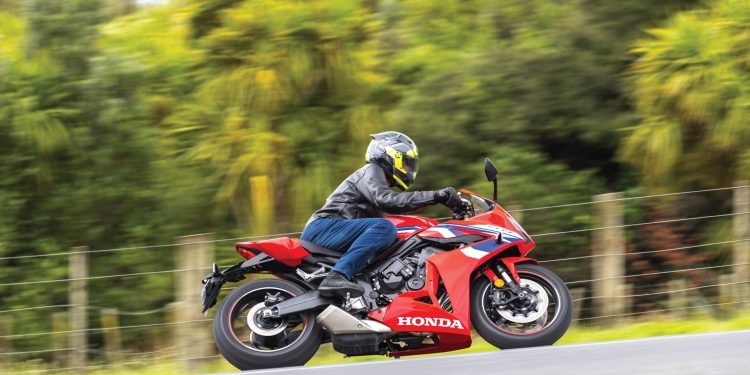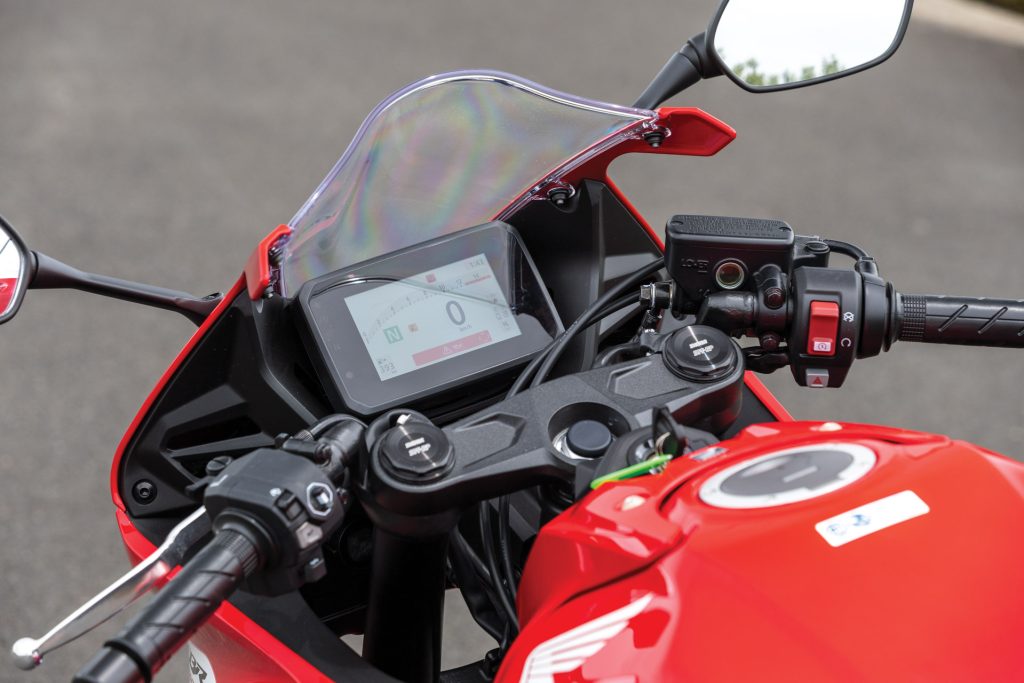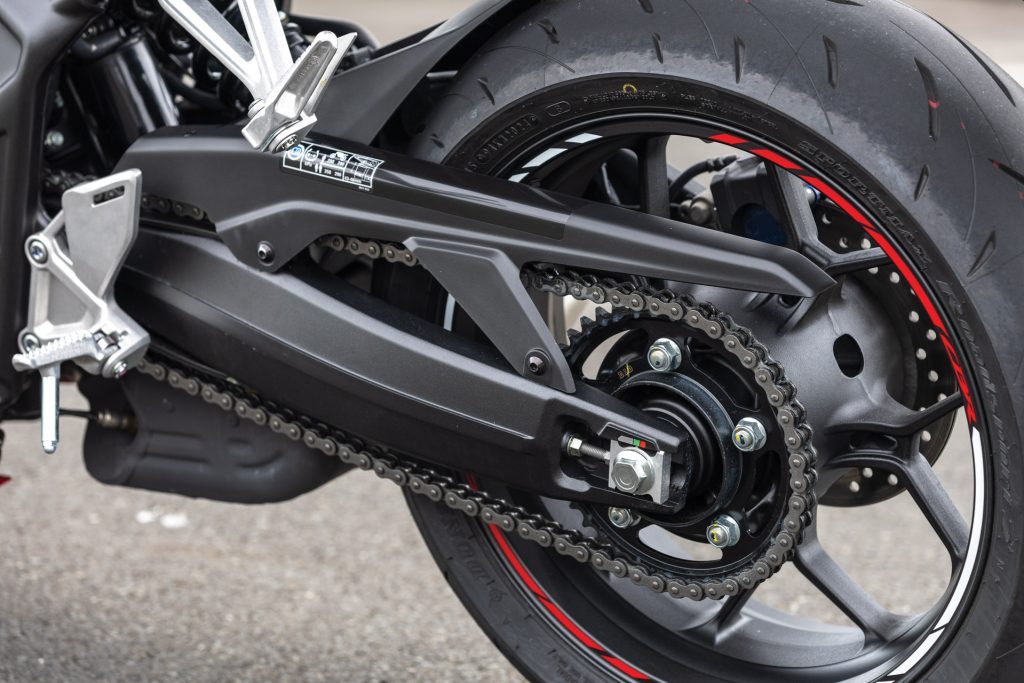2025 Honda CBR650R Review
Words: Peter Louisson | Photos: Isaac Western
If you like the concept of a quickshifter but bemoan clutchless downshifts, Honda has the system for you. We check out the E-Clutch attached to a CBR650R LAMS machine.
Automatic transmissions for motorcycles are still a bit of a rarity, but automated manuals certainly aren’t. We’ve been riding all manner of motorcycles for ages that have automated manuals. Better known as quickshifters, you use the clutch to engage first gear and once you’re rolling the clutch isn’t needed again until you roll to a stop. Upshifting is typically smooth and rapid, downshifting not quite so much. While the latter has improved out of sight over the years, you still get the impression that doing so manually is smoother, more mechanically sympathetic.
That’s changing. Ever the innovators, Honda has gone about improving on the quickshifter by developing what they call the E-Clutch system. This is quite different from the firm’s DCT or dual-clutch transmission. With DCT, there’s no clutch lever on the left side of the handlebar and no foot lever for shifting either. So shifts are done fully automatically, like in a car, or manually using a thumb lever. There’s a “computerised electro-hydraulic control system” as the interface.
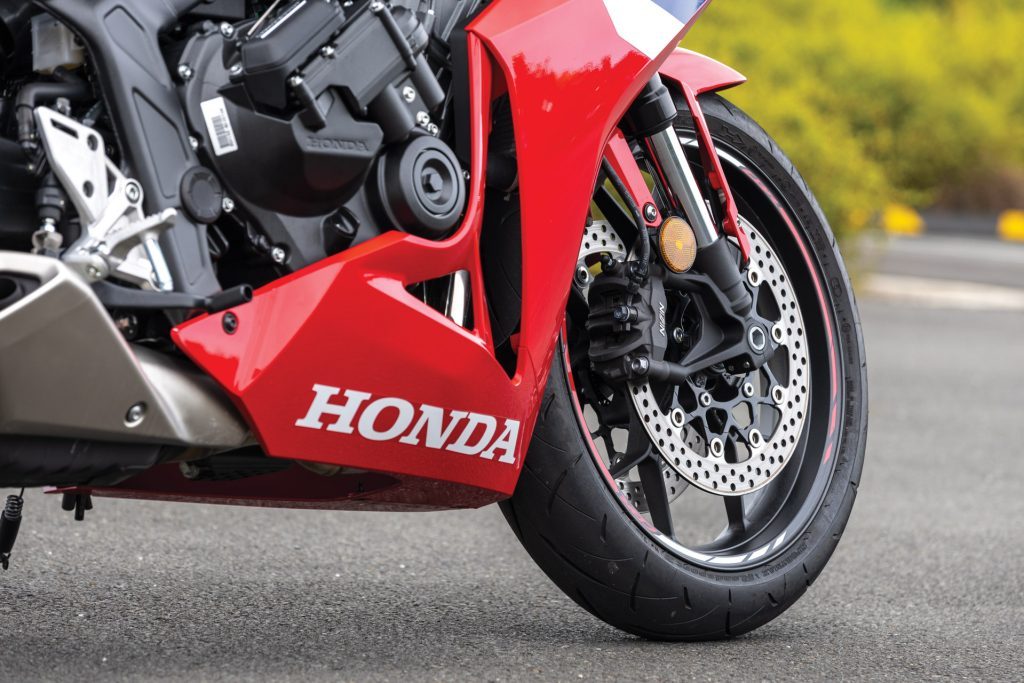
E-Clutch is different again
Now the E-Clutch is really rather an elegant solution, acting like a next-level quickshifter. Essentially this uses electronic control technology to work the clutch. Thus, it automates the clutch operation only. You still have to do the rest; there’s still a foot-operated shift lever. It’s just that you have the choice of shifting conventionally if you want, using the clutch lever as per normal, or shifting clutchlessly if you don’t want. Up or down the gearbox.
And I can tell you right now that after using the system as designed for a few minutes, you won’t ever want to use the clutch lever again. And nor do you have to. We imagine, in future, Honda will just ditch the clutch lever in E-Clutch bikes altogether.
As to how it works, the E-Clutch uses two motors that actuate the clutch plates based on information from various parameters, including gear shifter pressure, gear position, throttle input and wheel speed.
So you can pull away from a stop without touching the clutch lever, like with a CVT scooter. And you can come to a stop while leaving the clutch lever alone. You shift gears manually, as per normal, only without a clutch and without backing off the throttle, just like with a quickshifter. However, shift shock is markedly reduced so changes are smoother and evidently 20 per cent faster. About the only negative of note is that it occasionally hits neutral when shifting from first to second gear.
And it adds just 2kg of hardware and a bit of width to the bike.
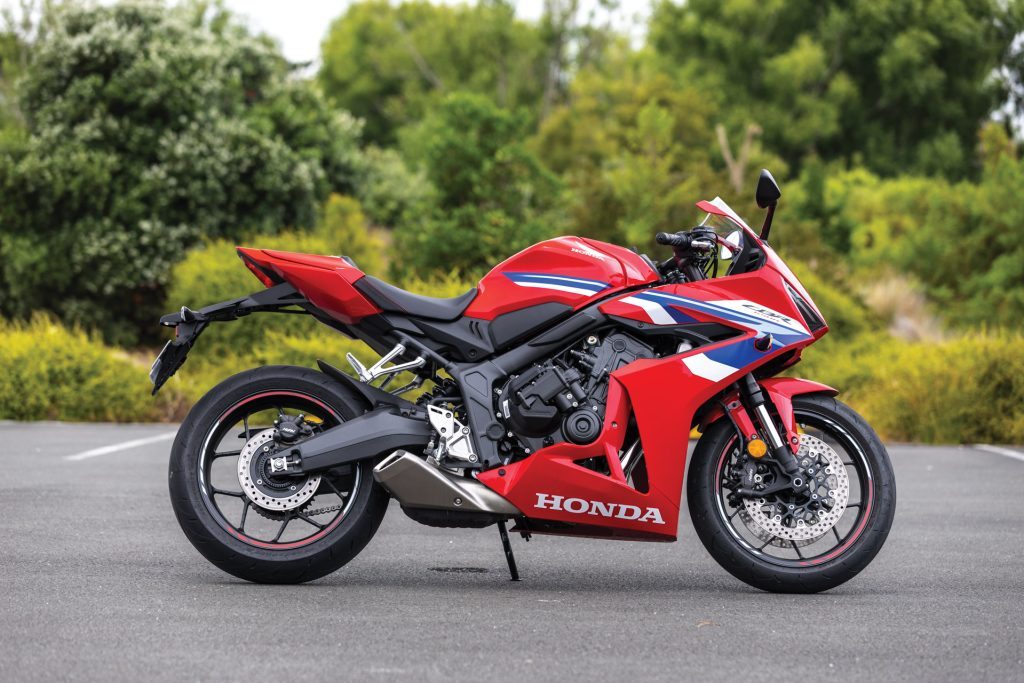
Other changes less marked
The 650R is already wider than most in its class because it is an IL4, where the majority are parallel twins. So that’s a bit different. And the cost? The CBR650R without the E-clutch is $15,945. With the E-Clutch it is $16,695. So that’s about what you’d expect to pay for the addition of a quickshifter. For ease of operation we’d say spend the $700 on the E-Clutch. This is a genuine advancement on a quickshifter. And not just because you don’t actually have to engage with the clutch lever ever again; it sorts the downshifts way better than any quickshifter I’ve ever encountered. WAAY better.
Cant quite run to that? The CB650R of the naked variety is now only available as an E-Clutch model, costing $15,695.
Of the two E-Clutch 650s, the naked bike is the one I’d opt for personally, better at a mix of urban and rural riding. If you’re young and injury free, sure the CBR650R looks better.
As to the rest of the bike? Well, it’s a LAMS 650 four by Honda. And there’s one thing that this does that a parallel or V-twin cannot hold a candle to. And that’s flexibility at really low revs. This will slope around the burbs in top gear right down to 30km/h or so, and still ease away smoothly on the throttle. Meantime, it revs high enough at the other end (12,750rpm limiter) to hit 100 in first. So there’s enough performance for a beginner. But it isn’t super quick; once you get above the wholesome midrange it’s a bit slow to rev and there’s no point where it really takes off. So you will ride this almost entirely using the midrange urge. It may look fast but many of the parallel twin LAMS bikes will show this the way. Even Honda’s CBR500R is quicker. This tends to bog off the line, even when clutched manually. I still recall how quick the original CB650 (not LAMS) was, a proper tearaway.
This has rather a Fireblade junior look about, with clip-on bars, a new pillion seat cover and the latest red, white and blue Honda livery.
One other thing you notice about an IL4 is that they don’t have quite the turn-ability, for want of a better word, of the modern compact parallel twins. Just a hair slower to respond and change direction but there’s not much in it. And the CBR compensates with a great ride from its Showa suspension. It’s fixed up front, preload adjustable at the rear. Spring rates are lower this year while compression damping is a touch firmer. It all feels just right. We weren’t even tempted to twiddle with anything. Brakes, radial mount Nissins up front are great, though the rear is a touch lifeless and lacklustre.
The bike world is fast catching on to automatics, which threaten to be the next big thing. This doesn’t have a D or fully automatic option that does it all for you. But the E-Clutch is unquestionably a better automated manual than any quickshifter we’ve encountered. If you’re buying the CBR650R, definitely spend the extra $700 on this trick piece of tech.
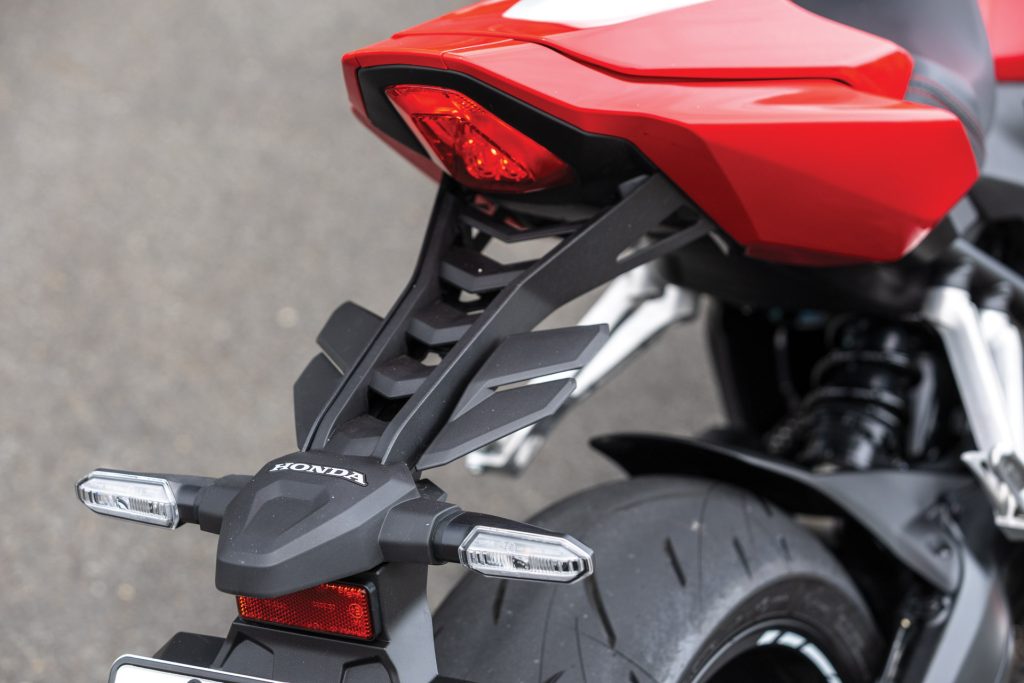
Honda CBR650R (LAMS)
$16,695
0-100 km/h 6.30s
80-120 km/h 4.63s (132m)
100-0 km/h 39.19m
Speedo error 94 at an indicated 100km/h
Engine Capacity 649cc
Format Liquid-cooled / fuel-injected / IL4
Max power 35kW@9500rpm
Max torque 49Nm@3500rpm
Cylinder head DOHC / 16v
Gearbox 6-speed E-Clutch
Drivetrain Chain final drive
Suspension front 41mm forks, Unadjustable
Suspension rear Monoshock, Preload adjustable
Brakes front Four-piston calipers, 310mm twin discs
Brakes rear Single-piston, 240mm disc
Safety systems ABS
Tyre size f-120/70ZR17, r-180/55ZR17
Wheelbase 1450mm
Seat height 810mm
Rake/trail 25.5° / 01mm
Fuel capacity 15.4L
Measured weight 208kg
Weight distribution f-103kg / r-105kg


